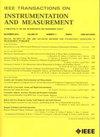On Grain Security by Temperature Interpolation: A Deep Learning Method for Comprehensive Data Fusion in Smart Granaries
IF 5.6
2区 工程技术
Q1 ENGINEERING, ELECTRICAL & ELECTRONIC
IEEE Transactions on Instrumentation and Measurement
Pub Date : 2024-10-23
DOI:10.1109/TIM.2024.3485435
引用次数: 0
Abstract
As an indicator of grain safety, grain temperature data assumes great importance in the analysis of grain storage conditions and the decision-making of preventive measures such as ventilation and cooling. However, obtaining a thorough picture of grain temperature distribution via grain IoT with sensors deployed in the granary remains a challenge, given numerous data gaps across various areas due to insufficient coverage of the sensor network that fails to encompass the entire granary. Interpolation of grain temperature data, in this regard, is able to fill in the “unsensored” areas that are vacant in the records of data. Yet little literature is found in the frontier scholarship of grain temperature interpolation. To fill this noticeable niche, this study develops a novel data fusion interpolation model named convolutional neural network-attention-multilayer perceptron neural network (CAMNN) featuring an integration of convolutional neural network (CNN), attention mechanism, and multilayer perceptron (MLP). CNN is used to capture local spatial features of the temperature data, the attention mechanism enables the location of key and sensitive temperature areas, and MLP is incorporated for deep feature fusion. Performances of the proposed model are evaluated in a bin granary located in Shaanxi, China, and further validated in a larger bin granary of different storage types situated in Ningxia, China. Comparative assessments are conducted with five machine learning and deep learning (DL) models. Results indicate that CAMNN outperforms the other models, with a mean absolute error (MAE) of 0.5251 and a mean square error (mse) of 1.0881, demonstrating robust cross-context applicability across bin granaries varying in terms of sizes, storage types, and climatic zones.通过温度插值实现谷物安全:用于智能粮仓综合数据融合的深度学习方法
作为谷物安全的一项指标,谷物温度数据在谷物储存条件分析以及通风和冷却等预防措施决策中具有重要意义。然而,由于传感器网络覆盖范围不足,无法覆盖整个粮仓,导致不同区域存在大量数据缺口,因此通过部署在粮仓中的传感器进行粮食物联网来全面了解粮食温度分布情况仍然是一项挑战。在这方面,对谷物温度数据进行插值能够填补数据记录中的 "未删减 "区域。然而,在谷物温度插值的前沿学术领域却鲜有文献。为了填补这一空白,本研究开发了一种新颖的数据融合插值模型,命名为卷积神经网络-注意力-多层感知器神经网络(CAMNN),其特点是整合了卷积神经网络(CNN)、注意力机制和多层感知器(MLP)。卷积神经网络用于捕捉温度数据的局部空间特征,注意力机制可定位关键和敏感的温度区域,而 MLP 则用于深度特征融合。所提模型的性能在中国陕西的一个仓廒中进行了评估,并在中国宁夏不同存储类型的更大仓廒中进行了进一步验证。与五种机器学习和深度学习(DL)模型进行了比较评估。结果表明,CAMNN 的表现优于其他模型,其平均绝对误差 (MAE) 为 0.5251,平均平方误差 (mse) 为 1.0881,这表明它在不同规模、存储类型和气候带的仓廒中具有强大的跨环境适用性。
本文章由计算机程序翻译,如有差异,请以英文原文为准。
求助全文
约1分钟内获得全文
求助全文
来源期刊

IEEE Transactions on Instrumentation and Measurement
工程技术-工程:电子与电气
CiteScore
9.00
自引率
23.20%
发文量
1294
审稿时长
3.9 months
期刊介绍:
Papers are sought that address innovative solutions to the development and use of electrical and electronic instruments and equipment to measure, monitor and/or record physical phenomena for the purpose of advancing measurement science, methods, functionality and applications. The scope of these papers may encompass: (1) theory, methodology, and practice of measurement; (2) design, development and evaluation of instrumentation and measurement systems and components used in generating, acquiring, conditioning and processing signals; (3) analysis, representation, display, and preservation of the information obtained from a set of measurements; and (4) scientific and technical support to establishment and maintenance of technical standards in the field of Instrumentation and Measurement.
 求助内容:
求助内容: 应助结果提醒方式:
应助结果提醒方式:


